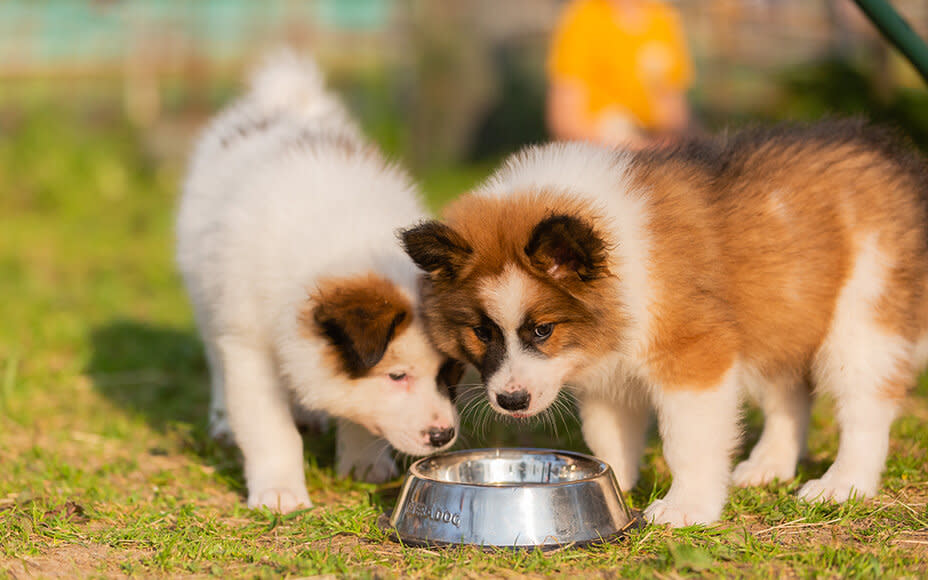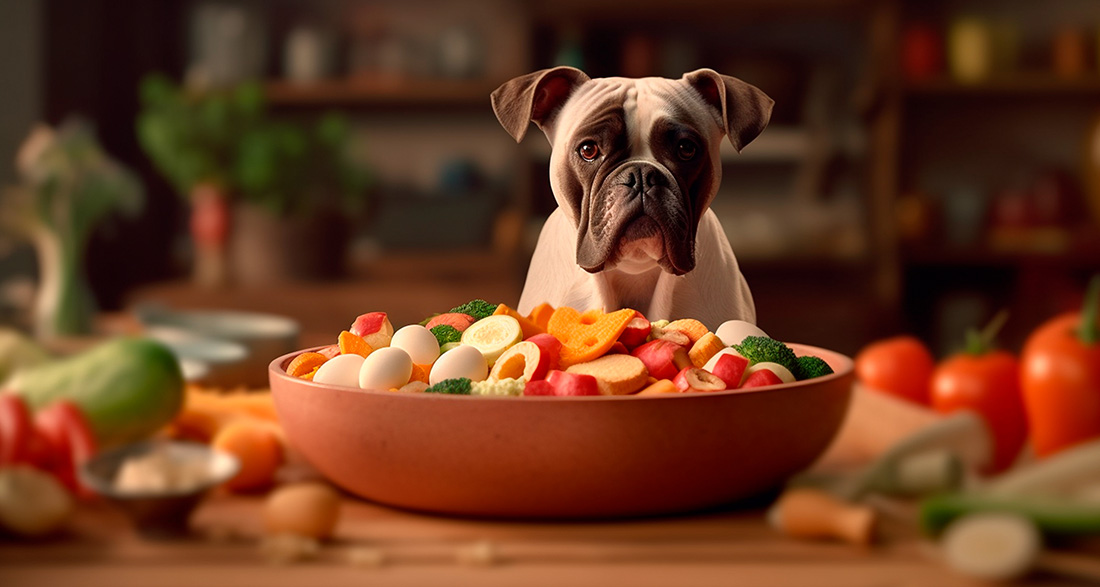How to Recognize Healthy Dog Food? We explain what to consider when choosing pet food and how to feed your pet healthily.
What is Healthy Pet Food?
Our animal companions are our everything. They are part of the family, and we want only the best for them. What we most desire is to spend many years with our furry friends, create memories together, and navigate through thick and thin.
To ensure that our four-legged family members remain a part of our lives for as long as possible, a healthy diet is crucial. But how do you recognize healthy pet food, and how can you find the right food for your pet?
What Your Pet Needs to Stay Healthy
Dogs, as meat-eaters (carnivores-omnivores), rely not only on meat but also on plant-based ingredients found in the stomach of prey animals. Vegetables and fruits serve as protein and carbohydrate sources for dogs.
It’s essential to ensure that the food matches your pet’s current life phase and situation, considering factors such as potential illnesses, intolerances, age, size, and activity level.
All essential nutrients should be appropriately dosed and taken in the right proportions. The more natural the source of these nutrients, the healthier and more digestible they are. Both over- and under-supply pose health risks.

What Should Be In and What Should Be Avoided?
In addition to ensuring that a pet food contains all the essential components for a healthy dog life, one should also examine the unhealthy components.
What, for example, does “animal by-products” mean? These include: claws & horns, fur & feathers, intestines & bladder, aged meat, meat from roadkill, and leftovers from the food industry (e.g., expired food).
These raw materials are not subject to legal regulations regarding bacterial contamination and the maintenance of the cold chain, so they must be heavily heated and chemically treated. This process results in the loss of remaining nutrients, which then need to be artificially added. While a food can be labeled as having a “high meat content” legally, this slogan says little about its quality.

How to Recognize Healthy Pet Food
Is every pet food available in supermarkets or specialty stores healthy and nutritionally balanced?
The answer: Yes and no. Most types of food found in stores cover the average nutrient needs for a dog. However, many products contain excessive amounts of some nutrients, leading to health problems just like under-supply. More importantly, you should ask: Where do the nutrients come from?
In conventional pet food, nutrients are largely synthetically added. To offer dog food at discount prices, artificial additives are chosen over natural ingredients due to cost reasons. Many of these additives have already been proven to have carcinogenic effects in humans. Cancer diagnoses are also becoming more common in pets, with cancer being the number one cause of death in dogs.
A characteristic of natural and species-appropriate pet food is that the nutrients are added naturally – through high-quality raw materials such as meat, vegetables, fruits, and herbs. More nutrients are preserved through gentle preparation.
Read Labels
You can recognize good food by its transparency: the sources and proportions of the nutrients are precisely known. In conventional food, it’s not clear what and how much of each ingredient is present. Natural nutrients? Absent. You must assume that the nutrients, required for a complete food, are artificially added.

Effects of Unhealthy Pet Food
Although one may initially save money with conventional pet food made from cheap raw materials, the first veterinary visits usually follow soon.
Unhealthy food, often enriched with high levels of cereals, sugar, flavor enhancers, and colorings, typically leads to itching in your pet after a short time, followed by dull, scaly fur. Gluten-containing cereals statistically have the highest allergy potential among food components. While our pets can process small amounts of gluten-containing ingredients, an adverse reaction is programmed with the large quantities often found in conventional food. This is accompanied by bloating and other digestive issues.
The sugar frequently found on the ingredient list of conventional pet food can also harm your pet in the long run: obesity and diabetes can be the result.
Our Conclusion
Healthy pet food has a significant impact on the physical and mental health of your dog. Now you have a small guide on what your furry friend needs to stay healthy and vital throughout its life. You also know how to recognize healthy and high-quality pet food and differentiate it from conventional products.
At iHugDogs, we are committed to offering an alternative to conventional products, making species-appropriate and natural dog feeding accessible to everyone. We completely avoid gluten-containing cereals, sugar, flavor enhancers, and colorings. Instead, our food shines with high-quality raw materials, gently cooked vegetables, fresh fruits, as well as rich oils and herbs.
With us, you get healthy pet food for every need – whether it’s fresh BARF menus, wet food, dry food, or healthy treats. If you’re not sure which food is suitable for your furry friend, try our free Nutrition Consultation.


